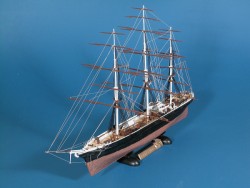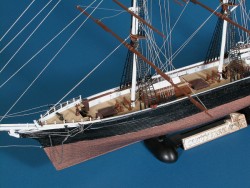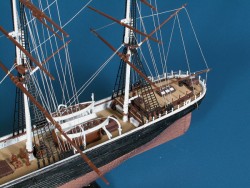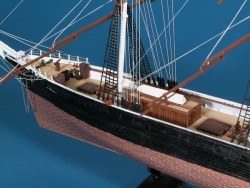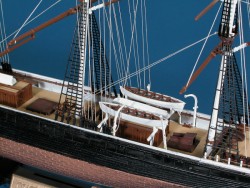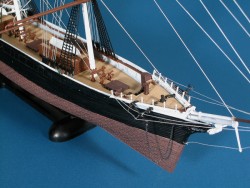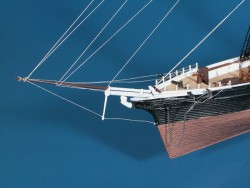| Academy 1/160 Cutty Sark | 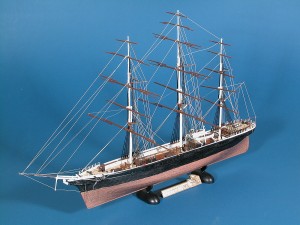 | Background The Cutty Sark was launched on 23 November 1869, designed to be the fastest merchant clipper in the world. Designed in Scotland by Scotten & Linton, the Cutty Sark was intended to outperform another Scottish clipper, the Thermopylae (at that time, the fastest clipper in the world). During this era, these clippers were built to support trade between London and China and the only way to reach China was around the Horn of Africa. Races were routinely run to encourage rapid transit to/from China and keep the trade flowing. Unfortunately (for the Cutty Sark), the Suez Canal was also opened in 1869 and reliable steamship traffic commenced shortly thereafter between London and China. The age of the high-speed Clipper was almost over. In 1879, Cutty Sark became a wool clipper, connecting Sydney, Australia with London. While Thermopylae joined the fleet two years later, Cutty Sark was still the fastest Clipper in service. In 1915, Cutty Sark was sold and sent off for restoration. She was presented to the Thames Nautical Training College in 1936. After WW2, Cutty Sark was placed in a special dry dock where she remains on display at the National Maritime Museum in Greenwich. The Kit This kit is a new release in 1/160 scale. It is a wonderful addition to any collection and looks great when you open the box. All parts are flash free and easily identified on the trees, which are molded in brown,white,tan, and black. The hull is found in two halves, with on new addition. The rudder and stern post are molded as a complete section, which eliminates the seam found on most rudder assembly. Construction I noticed that there were no gaps in the hull keel, which was a most pleasant surprise. At this time I decided to paint the hull. The instructions showed white below the waterline, but I chose to use copper. I next moved to the deck. The molded color is so close to natural wood, I left it as is. All the deck furniture went together as per instructions. The only problem was the pintails, but after a trial fit, they were fine. With the deck finished, it was time to place the masts and yards This kit was unique as the masts were molded as one unit which only required adding crosstrees and yards. The yards were shown as full assemblies complete with outriggers. Again, another nice touch which moved this kit to a must have for my collection. The kit is equipped with vacuformed sails to allow the ship to be seen under full sail. I chose not to add sails at this time in order to show all the rigging. This was the only problem with this kit. The material included was impossible to work with so I use aftermarket from my stash. Another drawback was the ratlines. They were molded in plastic that were too heavy for the scale. It would have been a nice touch to provide a rigging jig to make the ratlines i.e.: Heller products. Conclusion Overall the quality of this kit is excellent. This kit would make an excellent first 'sail powered' ship project for the modeler ready to try something new. The instruction book was a class in Naval knots, which should help any shipbuilder. I rate this kit as one of the best I have I have built and would recommend it to anyone that wants a greyhound in their fleet. Build time was two weeks with about four hours a night. My sincere thanks to MRC for this review sample! | 







|

